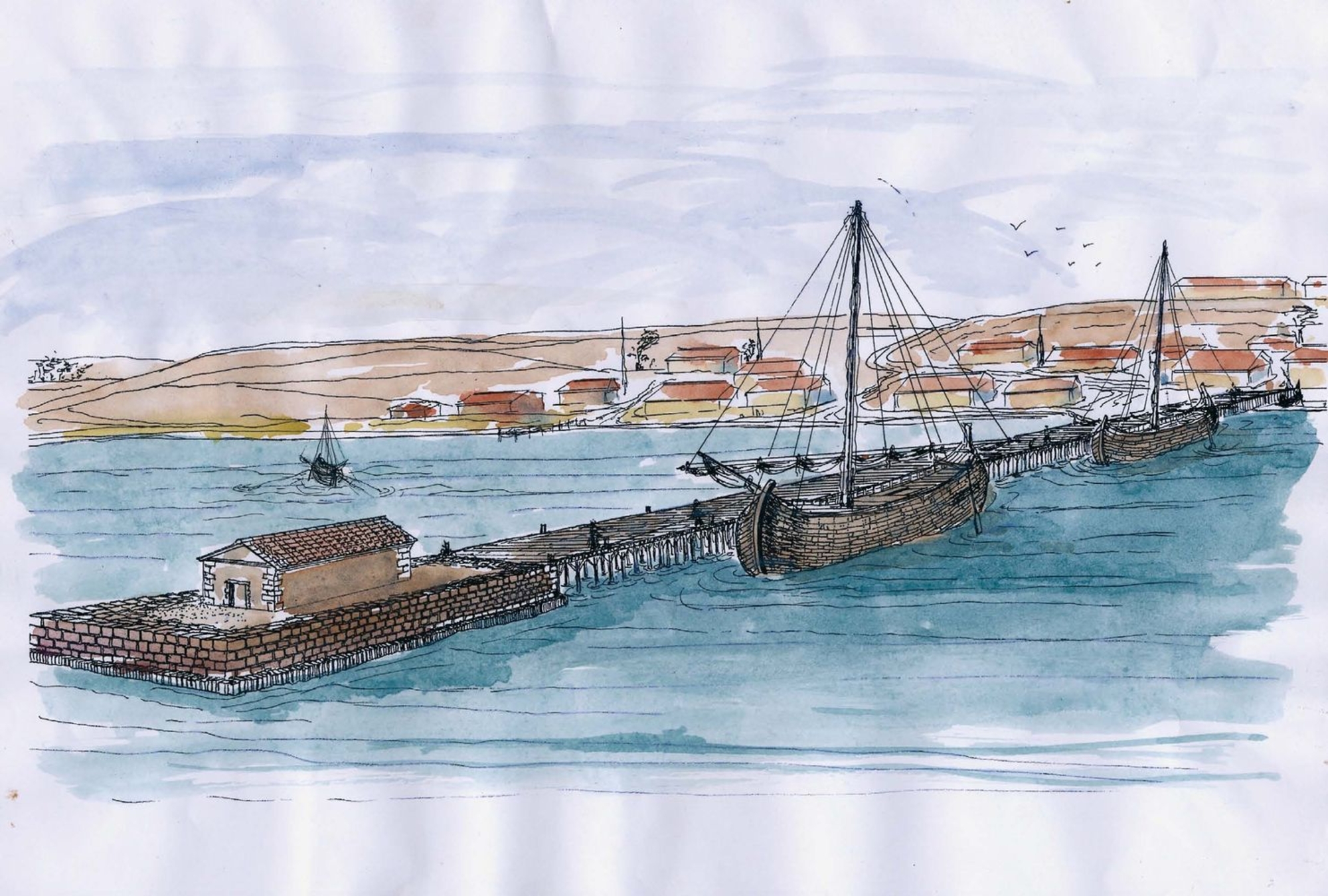
- Home
- Exploring the shoreline
- Ports and harbours
- Ports of Narbonne
Research on the ancient ports of Narbonne has been ongoing since 2010. The programme is led by DRASSM and the regional council of Occitanie. The aim of the research is to retrace the movements of the various port areas of the Roman colony as they were forced to relocate in reaction to the evolving course of the river. Founded in 118 BC, Narbonne was considered the most important port in Gaul.
Of lagoons and men
Excavations in 2010 confirmed the important role played by the port of La Nautique with the discovery of large warehouses and an industrial area. The site was occupied for a relatively short period, from about 30 BC until AD 70 when Castélou/Mandirac established itself as the pre-eminent port in the region (a position it would hold until the fifth century). Deep-draught boats were able to enter the lagoon by means of a canal. Other features included two parallel causeways and a harbour wall more than 1.5 km long. Evidence suggests the west causeway continued to Narbonne, thus ensuring communications between the two sites.
Ile Saint-Martin
Situated in the district of Gruissan, this island site featured a remarkable complex within the context of the lagoons – as it does today – and may have been Narbonne’s outer harbour. A central building served as a support for peripheral constructions, including a tower with an external staircase. The luxuriousness of the site and the view it affords over the lagoons suggest that it was a complex of public buildings. It was perhaps connected to trade and shipping, or industrial activities and services such as a tank designed to supply boats with fresh water.


